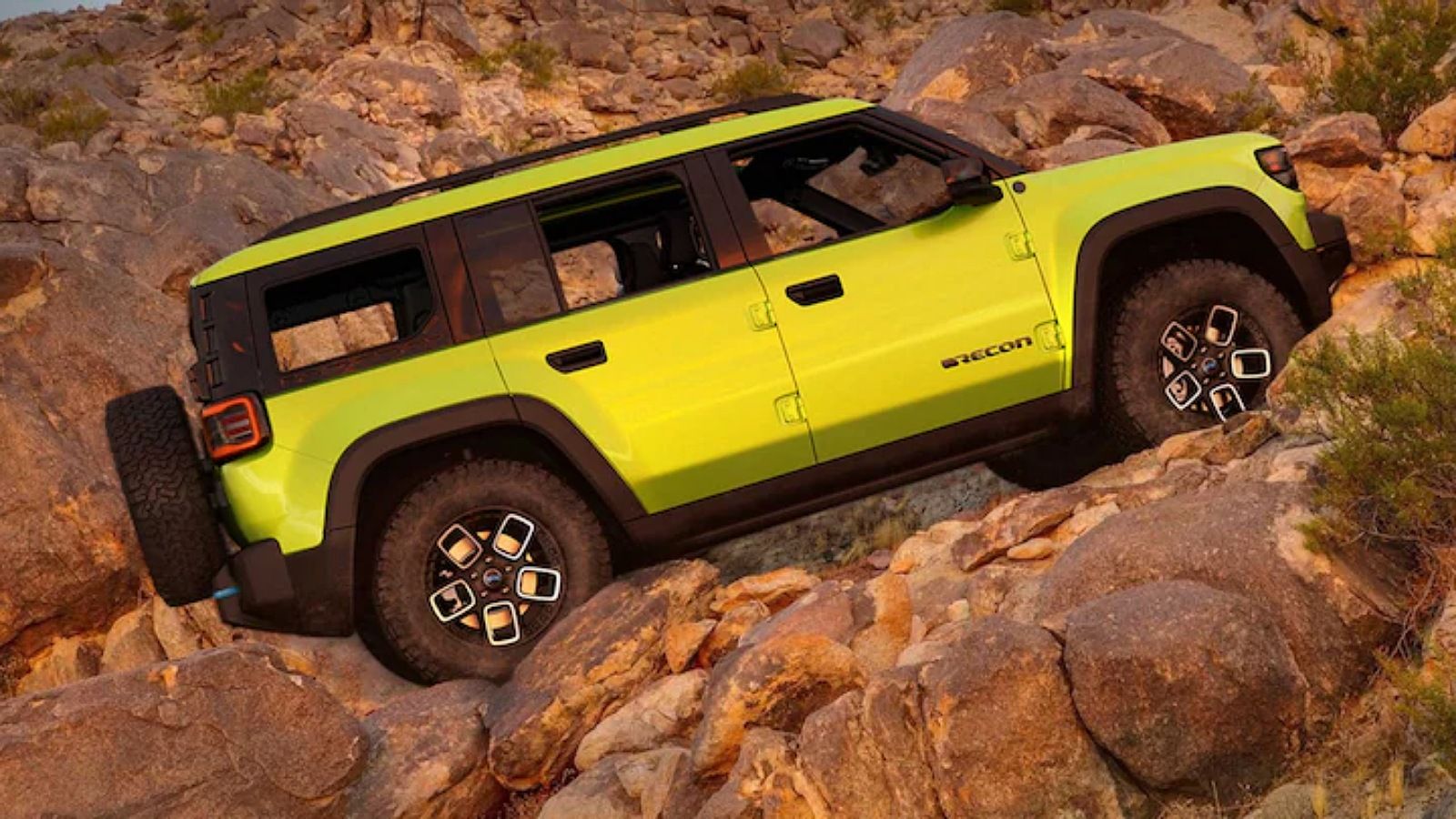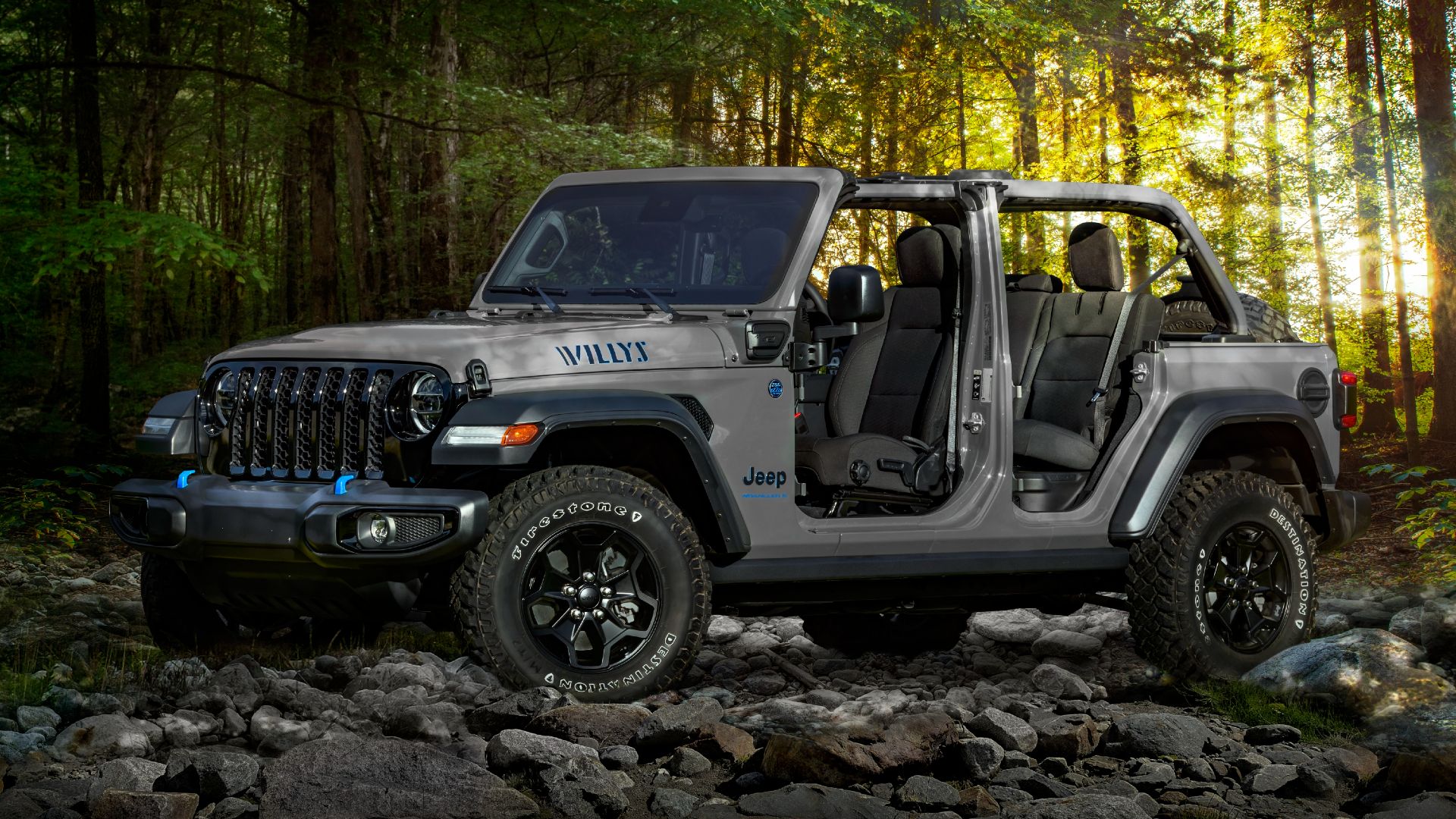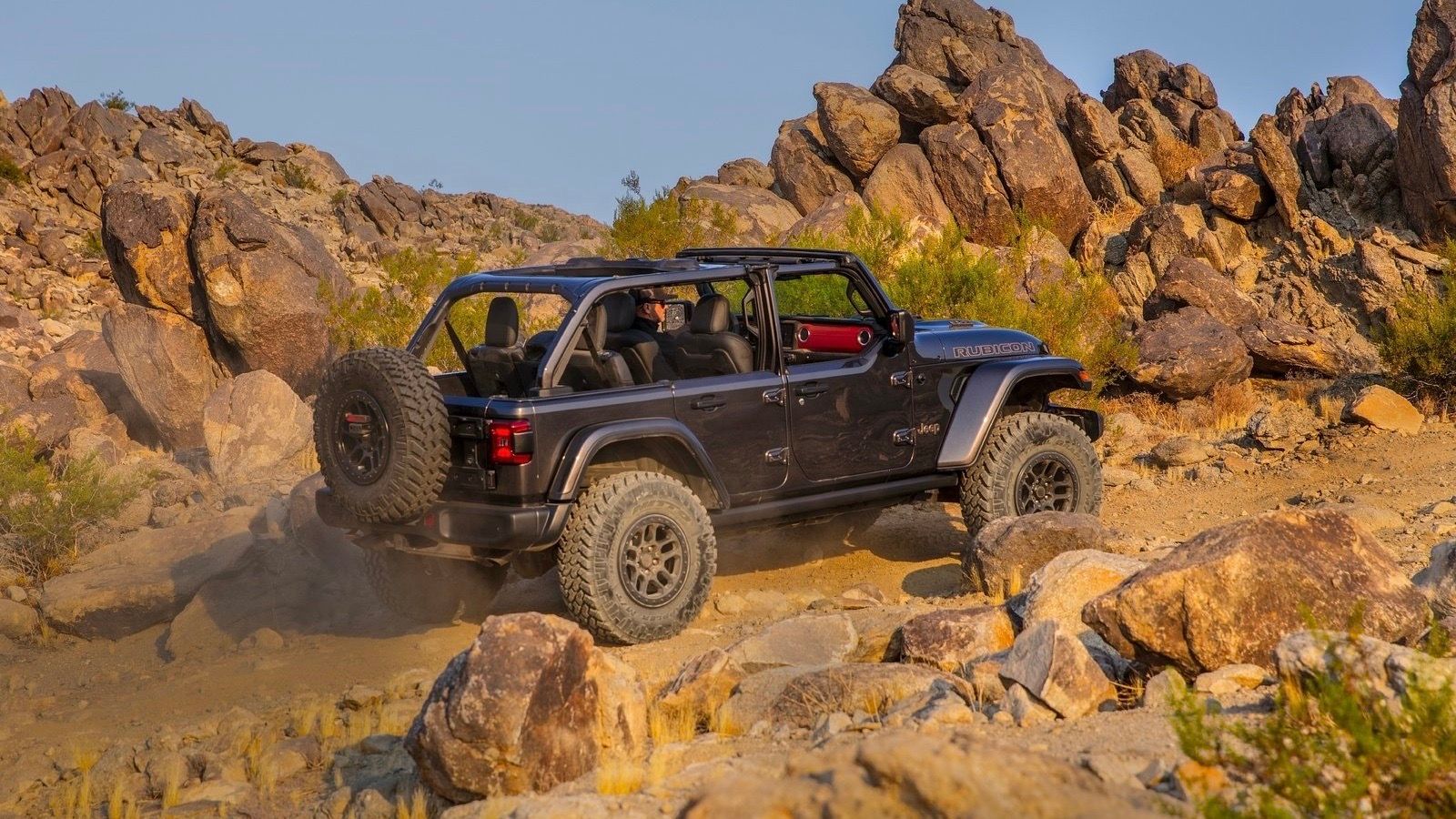Since the 1940s, starting in the combat zones of WWII, Jeep has made a legendary name for itself in the realm of off-roading. Enthusiasts in this scene will take a number of rigs off the beaten path stemming from the Jeep brand, including J10 and J20 trucks; old and new Gladiators; original Willys and CJs; YJ, TJ, "LJ," JK, and JL Wranglers; XJ Cherokees; and Comanche compact pick-ups. Many of these are based off of the same platforms and drivetrains, with tweaks and improvements across the decades to improve capability. For example, the YJ moved away from the V-8s of the CJ, ushering in the famed H.O. 4.0-liter inline-six engines. These were carried into the next-gen TJ, which then ditched the YJ leaf spring suspension, for a four-corner coil setup. As such, the TJ is considered by many as the best outta-the-box Wrangler one can get, and called the last of the "real Jeeps," for the JK ushered in the first four-door Wrangler.
This, of course, was in response to the surge in bigger trucks becoming more popular at the time, as larger cabs and four-doors became the norm, and compact trucks died altogether. However, while compact trucks are now making a comeback, the Recon, which is Jeep's first fully-electric vehicle, is not as ideal for off-road use.
The Jeep Recon Changes The Name Of The Game
The automotive landscape is an ever-changing one, marked by all the trends in consumer choices, and societal outlook. This is why compact vehicles like the Jeep Comanche ceased production, and why the Wrangler eventually evolved into a four-door configuration. Also, we see this reflected in the push to electrify transportation, leading Jeep to develop the first-ever hybrid Wrangler in the form of the Wrangler 4xe (pronounced four-by-E). Now, we see this culminated in the upcoming Jeep Recon, the brand's first fully electric vehicle, based on the legendary Wrangler itself.
Like the Wrangler, and competitor Ford Bronco, the Jeep Recon's top is power-folding and doors will be easily removable. These would be the only three vehicles on the market today with such utility. The Recon will fit into the mid-size SUV class, comparable to Wranglers and two-row Grand Cherokees. The starting price isn't revealed yet, but expect the range and trims to follow the Wrangler example. That means a range of $60,000-79,000 estimated, with trims such as: Sport; Willys; Rubicon; Sahara; and Sahara High Altitude. Look for more information to become available in terms of price, range, battery size, and power output. Still, the vehicle looks more like a Jeep Renegade, or even Bronco Sport. In that sense, it's not considered in the same realm as the off-road rugged Wrangler it's supposed to be based on.
The Wrangler 4xe Makes More Sense
In today's world with the power grid still lacking the appropriate infrastructure to support mass-produced electric vehicles, a hybrid is the best compromise. This way, one doesn't have to worry about range anxiety or waiting hours for a charge. The vehicle still provides outstanding performance in terms of instant torque and high horsepower numbers, without sacrificing range. In terms of the 4xe, not only does it do all of that, but it also retains the look of the Wrangler. Now, the Wrangler is probably by far the most popular off-road model around. This has to do with its roots beginning back in 1987, built on the decades of off-road prowess that Jeep had developed before it. Additionally, being still around today, the Wrangler remains most popular. This includes the four-door that came with the bigger vehicle craze, as well as the much-called-for 392 V-8 version in Rubicon trim. Looking like the old Willys and CJ versions of original Jeeps from inception, the Wrangler name is synonymous with Jeep, more so than any other model.
Getting back to the 4xe, it gets 49 MPGe, with a total range of 370 miles. It has three driving modes: Hybrid, Electric, and E-Save, all to prioritize power and economy delivery. It even has front and rear differential lockers, an industry first for a PHEV. The 375 horsepower, 470 pound-feet of instant torque power train is impressive for a Wrangler. Only the 392, with its 6.4-liter HEMI V-8 rated at 470 horsepower and 470 pound-feet of torque, exceeds this in a Wrangler. It can charge in 12 hours fully with an included Level I charger, or in 2 hours with an optional Level II charger, and has a total all-electric range of 21 miles. So the stats are impressive, but all this adds more complexity to the vehicle, along with quite the price tag. It starts at $54,735, before a possible $7,500 dealer incentive, making it hardly affordable for most.
Sometimes Simple Is Best
Jeeps, specifically the Wrangler, are meant to be bare-bones and rugged vehicles. As such, they should be affordable and mainly used as recreational SUVs. That means relatively simple gas-only options, where all you need is a gas can versus a charge. A solid one-piece hard top, or a removable soft top, to come along with removable doors. This means rugged manual transmissions, something being lost more and more each year, to have connected control over obstacles. This is not available on the Wrangler 4xe, 392, or presumably Recon. Also, we're talking body-on-frame construction, with solid axles, and a two-speed transfer case. The windows are manual, as well as the locks. They should also be lightweight, whereas electric motors will only make things heavier.
That's just to start off with the base vehicle. Furthermore, the Wrangler is a vehicle that is highly adaptable and modifiable, given the immense aftermarket support. You can have it how you want it with almost any budget. Even though some market areas tend to raise the price on used examples, they are still significantly cheaper than any new Jeep today. For these reasons, the TJ is the final Wrangler that meets all of these characteristics, and why many Jeepers refer to them as the "last of the real Jeeps." Still, newer four-door JK and JL models all abound on the streets and trails, proving that the Wrangler's popularity hasn't waned with newer ideas or tech. These vehicles may still be repaired out on trails if necessary, a very serious consideration given the real break-down possibilities.
Even so, the advent of the 4xe is a culmination of societal changes and market trends, blending the old with the new in a familiar package. This may be serviceable at the moment, but when the Recon arrives to test the market, we'll truly find out how the Jeep community really feels about it. Jeep has committed to placing solar panel Level II charging stations at key trailheads in the U.S., but it's unclear what that means. Is this at the Rubicon trail in California as well as in Moab, Utah? What about Arizona, Colorado, and even Alaska? One thing's for certain, this is a boost to the 4xe, but undoubtedly required for a full-on EV such as the Recon. Nevertheless, is that really what the off-road community wants to see out there in the badlands? This is assuming a Jeep Recon EV can even make it out to most trailheads in the first place.




